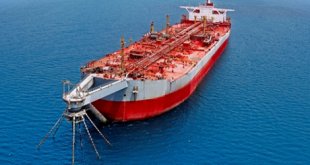
Editorial
On 9 August an air strike by the Saudi-led coalition on the Yemeni city of Saada hit a bus carrying dozens of children while on their way back from a picnic, killing 51 people, including 40 children, mostly under the age of 10. Nearly 80 people were badly injured, including 56 children. While the world watched in horror and pain the bodies of the small children, mutilated and piled on top of each other in pick-up trucks, or lined up dead on the sidewalk while covered in blood, UNICEF’s acting representative in Yemen rightly said, “All in all, as for children, it’s one of the most dangerous places on earth right now.”
However, the sad and ugly reality is that Yemen has for long now been the “most dangerous place on earth” for all 27 million Yemenis who live in the war-torn country. Long before the civil war broke out in Yemen in 2011, the country was frequently described by the international agencies as one of the poorest in the world, with non-existing basic services and highest rates of illiteracy.
However, since the Saudi-led war started more than three years ago to support Yemeni President Abd Rabu Mansour Hadi against Houthi rebels who control the capital, Sanaa, the levels of suffering of the Yemeni people reached unprecedented levels, comprising a human catastrophe of epic scale while the world watched indifferently. More than 10,000 people have been killed since the Saudi-led war started in March 2015, including hundreds of children. But the deaths caused by military action are only part of the sad story, especially after the Saudi-led coalition tightly blocked Yemen’s land and sea borders nearly two years ago. Riyadh accuses the Houthi rebels of receiving support from Iran, both military and financial, a charge Tehran vehemently denies. The Houthi ballistic missiles that repeatedly tried, mostly unsuccessfully, to hit Saudi cities are supplied by Iran, Saudi officials insist. While Yemen is not the only front of the Saudi-Iranian confrontation, it is by far the worst alongside Syria, Iraq and Lebanon. After Saudi Arabia and the United Arab Emirates launched a military operation to capture the strategic port of Hodeida a few months ago, more than 22 million people, including 11 million children, were left in need of humanitarian assistance, and more than half of the country’s health facilities are out of service, according to the UN Office for the Coordination of Humanitarian Affairs.
Meanwhile, about 400,000 children are suffering from severe and acute malnutrition and depend on a continuous supply of medicine and nutrition for their survival. About 150,000 malnourished children could die within the coming months if left untreated, the UN said. Practically one child dies from infectious diseases or malnutrition every 10 minutes in Yemen, the UN added.
Yemen has also seen the world’s largest cholera outbreak with more than 920,000 suspected cases and 2,200 cholera-related deaths— a fourth of those cases are children, according to UNICEF. Only 45 per cent of health facilities are functional and at least 14.8 million are without basic healthcare. Some 17 million people don’t know where their next meal will come from, according to the UN. Last week’s tragic incident that led to the death of dozens of children was not the first in which Saudi Arabia and Houthi rebels would trade blame. While the Houthis used the incident to highlight how indiscriminate and reckless the Saudi bombing was, Riyadh insisted that it carried out a “legitimate” military operation against what it thought was a bus carrying Houthi rebels who fired missiles at a Saudi city.
Whether Riyadh agrees to an independent investigation into this latest horrific incident, or carried out its own investigation, as in several previous incidents, will not change the inhumane, catastrophic conditions in Yemen that affect its civilian population.
The deaths of such a big number of children in one fell swoop must serve as the moment to finally push the warring parties, including the UN Security Council and the international community, to bring the conflict to an end. Saudi Arabia must also agree to immediately lift its blockade of Yemeni borders and allow urgently needed humanitarian assistance in.
At the same time heated debate continued on who was responsible for the deaths of the Yemeni children in Saada on 9 August, a UN vessel transporting 1,313 metric tons of health and nutritional supplies was being prevented from docking in Hodeida port, and another UN vessel with 25,000 tons of wheat is waiting to berth off the same coast, the UN Office for the Coordination of Humanitarian Affairs said.
The parties to the conflict must make the most of the upcoming 6 September gathering in Geneva to which, according to UN’s envoy to Yemen, Martin Griffiths, the warring sides would be invited for discussing “a political solution” that is “available”. While nothing will compensate for the death of innocent children, and thousands of other innocent Yemenis, perhaps this latest incident will be a starting point to put an end to this tragic human disaster.
From “Al-Ahram Weekly”.






